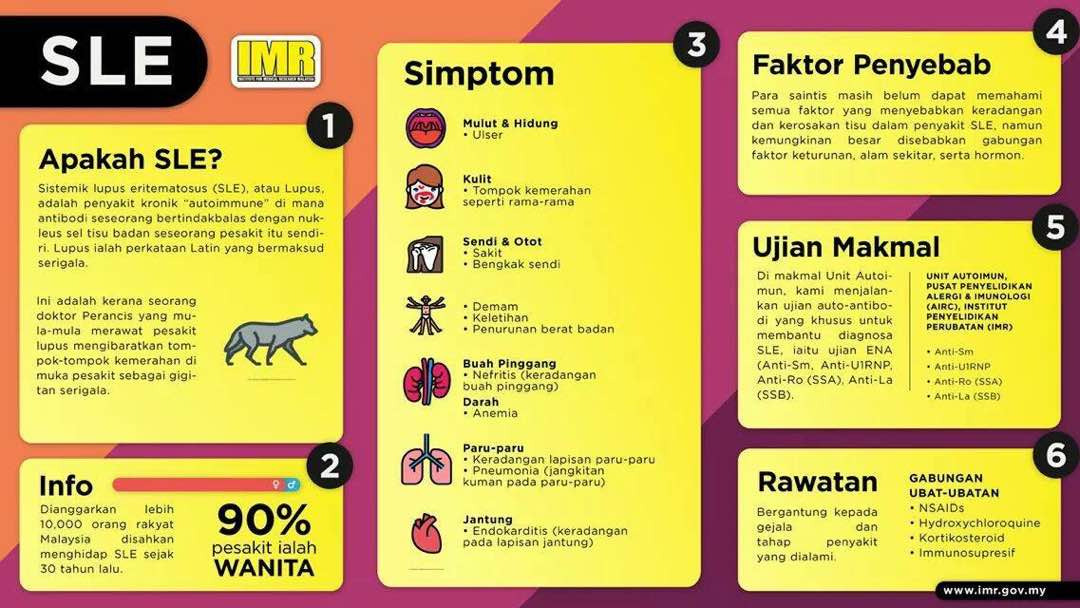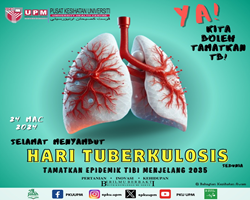Systemic Lupus Erythematosus (SLE)

In Malaysia, it is estimated around 10000 patients diagnosed with SLE since 30 years ago.
90% of patients are women.
Systemic lupus erythematosus (also called SLE or lupus) is a chronic inflammatory disease of an autoimmune nature that can affect the skin, joints, kidneys, lungs, nervous system, and/or other organs of the body. The word “systemic” means the disease can affect many parts of the body, while “lupus” is the Latin word for “wolf” (so called because a French doctor in the 19th century likened the facial rash to the bites of a wolf).
The most common symptoms include skin rashes and arthritis, often accompanied by fatigue and fever. The clinical course of SLE varies from mild to severe, and typically involves alternating periods of remission and relapse.
SLE can affect many organs in our body, including kidneys, lungs, central nervous system, blood vessels, blood and heart
The diagnosis of systemic lupus erythematosus is based on clinical and laboratory criteria. In Autoimmune laboratory, we do a blood test to detect auto-antibodies which is ENA (Extractable Nuclear Antigen) that includes anti-Sm, anti-RNP, anti-Ro (SSA), and anti-La (SSB).
Management of SLE can be a challenge. Treatment depends on symptoms and their severity. A combination of NSAIDs, hydroxychloroquine, corticosteroid dan immunosuppresives are widely used.
More information can be found on our website at www.imr.gov.my
Reference:
www.lupusmalaysia.org
credit: Institue For Medical Research,Kuala Lumpur
Date of Input: 01/08/2018 | Updated: 12/05/2022 | izzatussofia
MEDIA SHARING





























